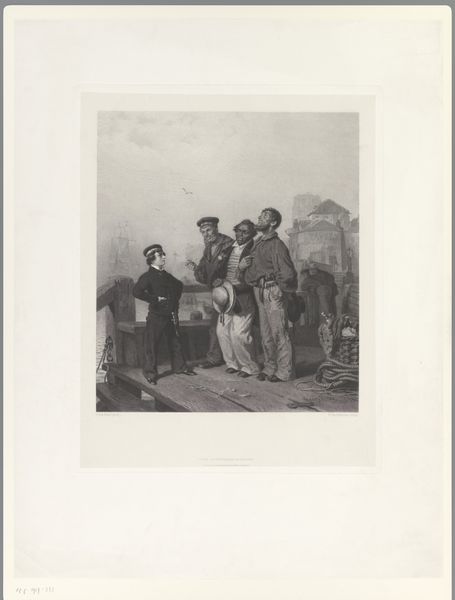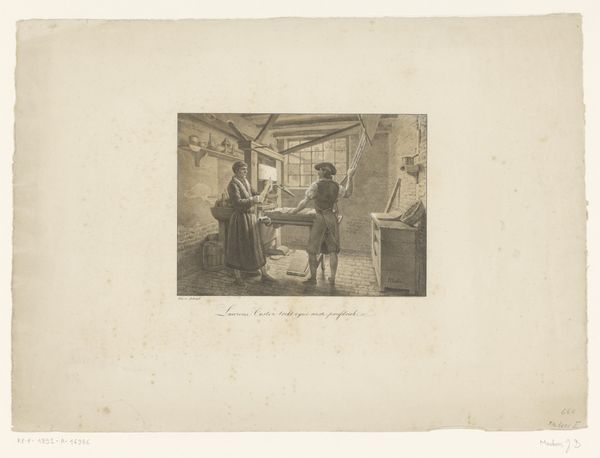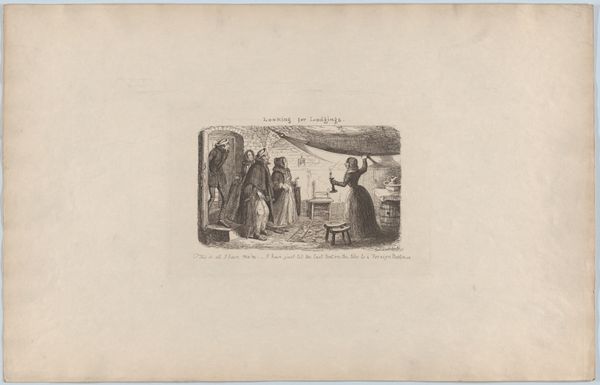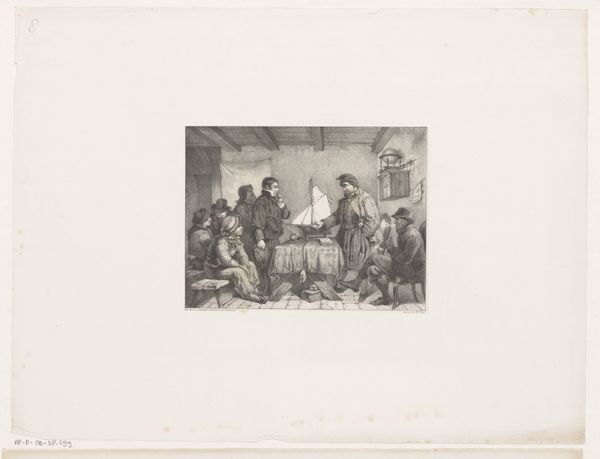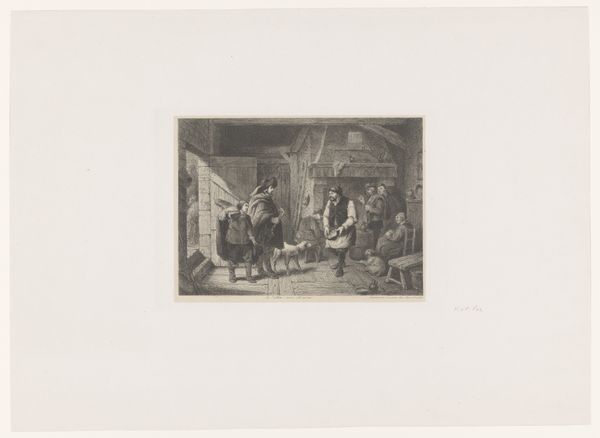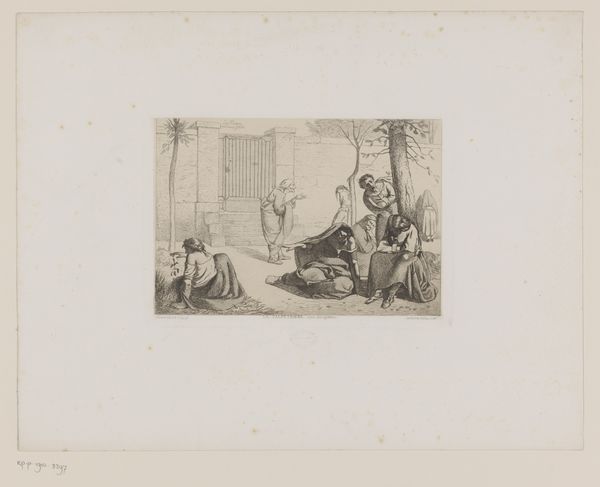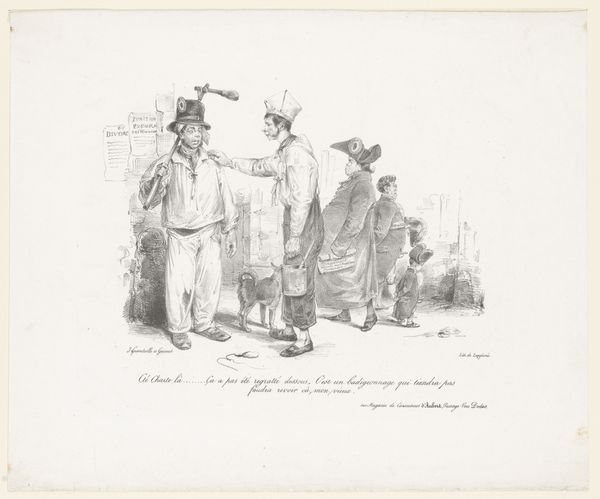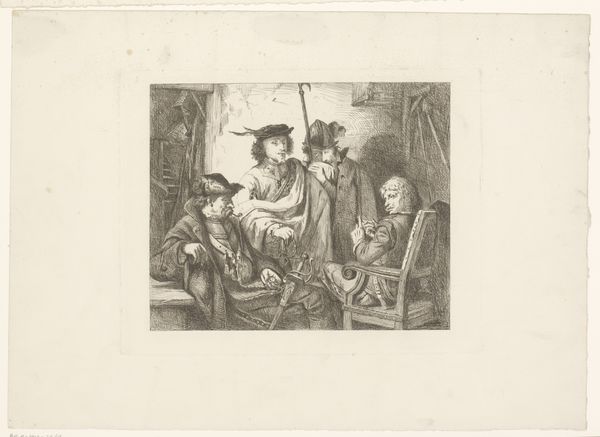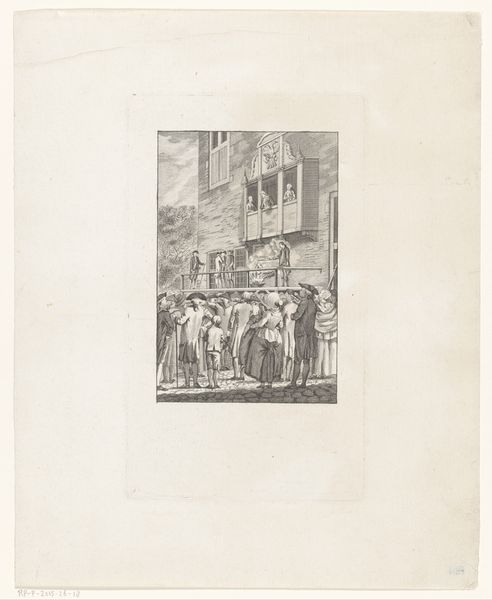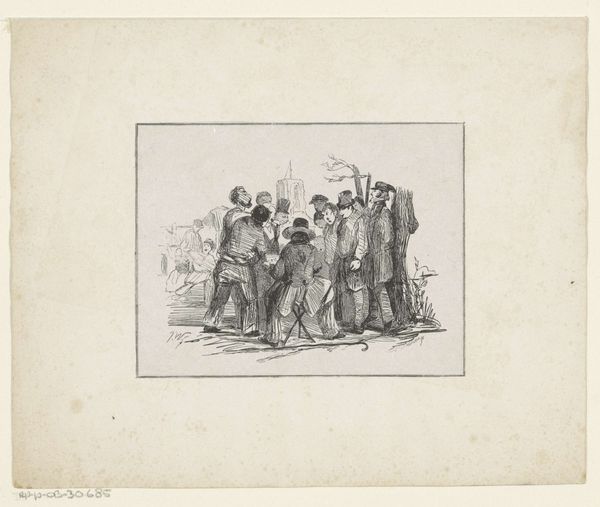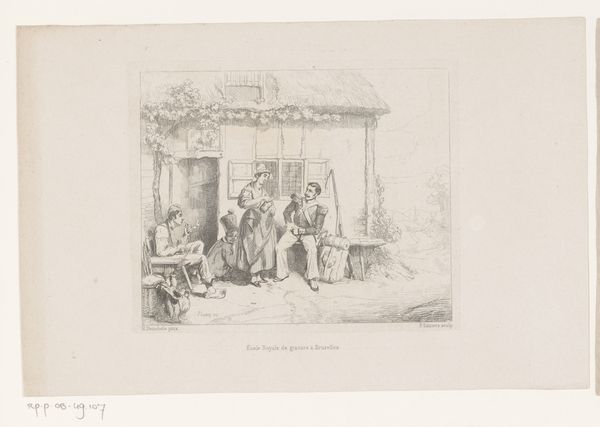
Militair benadrukt de ondergeschiktheid van de rijknecht door orders te geven in bijzijn van een meisje 1839
0:00
0:00
print, engraving
# print
#
romanticism
#
genre-painting
#
history-painting
#
engraving
#
realism
Dimensions: height 215 mm, width 295 mm
Copyright: Rijks Museum: Open Domain
Curator: Let's discuss Emil Ebers' 1839 engraving, titled "Military Emphasizing the Subordination of the Servant by Giving Orders in the Presence of a Girl." Editor: Immediately, I'm struck by the stark contrast. The limited tonal range, characteristic of engravings, intensifies the almost theatrical staging of the scene. It feels very posed. Curator: The scene indeed carries significant historical weight. Notice the power dynamics presented. The military figure uses his authority to demean the servant in front of a young woman. We can examine this through the lens of social stratification of the time. What societal structures allowed, or even encouraged, this blatant display of dominance? And how does gender further complicate this interaction? Editor: Absolutely, and considering it’s an engraving, look at the incredible detail Ebers achieves. The meticulous rendering of textures, from the rough walls of the building to the servant's simple clothing, emphasizes the class distinctions, doesn’t it? The use of line and hatching truly crafts a detailed visual language. Curator: Precisely! This visual language echoes the realities of the period—the strict hierarchy between social classes and the expected subservience of certain groups. What is the artist attempting to reveal about the social mores regarding displays of power and public humiliation? Editor: The figure of the girl is intriguing, too. She is positioned observing all the scenes: is her gaze a compositional focal point that guides our interpretation of the artwork towards notions of female complicity? Curator: It pushes us to think about complicity, spectatorship, and perhaps the normalization of such injustices. Ebers isn't simply documenting a scene, he's offering a commentary, however subtle, on the ethics of power and gender in his era. Editor: Yes, and structurally, it all builds to this unsettling observation. The placement of figures, the contrasts in light and shadow… It's a masterclass in how form dictates the reading of content. Curator: The way the artist conveys those layered power dynamics speaks to the power of art in prompting dialogue about historical inequalities. Editor: Indeed. Analyzing Ebers’ craft and how it contributes to those difficult narratives truly unlocks a more layered understanding.
Comments
No comments
Be the first to comment and join the conversation on the ultimate creative platform.
